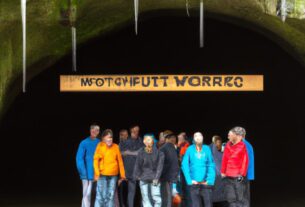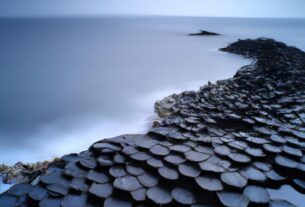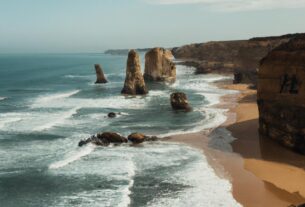Located in the Southeastern Pacific Ocean, the Easter Island is a destination like no other. With its breathtaking natural beauty, vibrant culture, and enigmatic history, this isolated Chilean territory promises a truly unforgettable experience.
A Glimpse into History
Long before the arrival of Europeans, the Easter Island, known as Rapa Nui, was home to the Polynesian explorers who settled there in the 13th century. Over time, the Rapa Nui people developed their distinctive culture, marked by extraordinary achievements such as the creation of the world-renowned Moai statues.
In 1722, European explorers set foot on the island on a fateful Easter Sunday, lending it the name by which it is now known. The fusion of Polynesian and European influences has shaped the island’s captivating history, captivating the imagination of people from across the globe.
Unraveling the Mystery of the Moai
The Moai statues stand tall as a testament to the Rapa Nui people’s ingenuity and reverence for their ancestors. These colossal stone monoliths, some towering up to 33 feet, were meticulously crafted between 1250 and 1500 AD. Resting on platforms called Ahu, the statues remain shrouded in mystery, leaving historians and archaeologists intrigued.
With over 900 Moai statues strewn across the island, their purpose remains a subject of debate. Some theories suggest they symbolize ancestral spirits, while others propose a protective role against potential invaders. Regardless of their true meaning, the Moai statues undoubtedly steal the spotlight, offering a captivating glimpse into the island’s mysterious past.
The Cultural Tapestry of Rapa Nui
Isolation from the outside world has allowed the Rapa Nui people to develop a rich and distinct culture. The fusion of Polynesian traditions with customs unique to the island has given rise to a vibrant tapestry of beliefs and practices.
Among these traditions is the Birdman cult, where young men vied to be the first to find the egg laid by a specific bird species. The victor would assume the role of chief for the following year. The Rapa Nui people have faced their share of challenges, including colonization and slavery during the 19th century. Despite these hardships, the islanders continue to embrace their unique heritage, with ongoing efforts to preserve and promote their cultural legacy.
Exploring Easter Island National Park
Established in 1935 and designated as a UNESCO World Heritage site, Easter Island National Park safeguards over 40% of the island. Its mission? To preserve both the island’s natural wonders and its remarkable archaeological sites, including the iconic Moai statues.
Within the park’s boundaries, visitors can immerse themselves in a wealth of attractions and activities. From picturesque hiking trails to pristine beaches and awe-inspiring viewpoints, the park showcases the island’s diverse flora and fauna—many of which are endemic species exclusive to this remote corner of the world.
Sustainable tourism lies at the core of Easter Island National Park’s philosophy. By prioritizing the island’s delicate ecosystem, the park’s management actively minimizes the impact of tourism. Visitors are encouraged to show respect for both the island’s natural and cultural heritage and to support local businesses committed to sustainable practices.
Environmental Challenges and Our Shared Responsibility
While the Easter Island’s allure is undeniable, it faces environmental challenges that we must not overlook. Centuries of deforestation and soil erosion resulting from the Rapa Nui people’s overuse of natural resources have left only remnants of the once-lush forests. The absence of vegetation has led to infertile land.
Additionally, overfishing poses another threat to the island’s fragile ecosystem. The waters surrounding the Easter Island teem with diverse marine life, but unsustainable practices endanger their survival. Addressing these challenges requires concerted conservation efforts to ensure the protection of the island’s natural beauty and biological diversity.
The Easter Island National Park plays a vital role in confronting these challenges. Established over eight decades ago, the park actively champions reforestation initiatives and marine conservation efforts.
A Call to Preserve and Discover
In summary, the Easter Island beckons as an extraordinary destination, weaving together history, culture, and natural wonders. The enigmatic Moai statues stand as a testament to human creativity and inspire wonder in all who behold them.
Nevertheless, as responsible visitors, we bear the duty to preserve this unique paradise. By championing sustainable tourism and supporting conservation efforts, we can ensure that future generations will have the chance to explore and cherish the Easter Island’s exceptional beauty.
Join TooLacks in advocating for the preservation of this precious gem. Embark on an adventure like no other and experience the Easter Island’s timeless allure. Let us leave a positive footprint on this remarkable destination.


